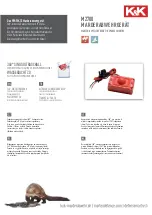
5-2
ATM Switch Router Software Configuration Guide
OL-7396-01
Chapter 5
Configuring Redundancy
Route Processor Redundant Operation (Catalyst 8540 MSR)
When the Catalyst 8540 MSR is powered on, the two route processors go through an arbitration to
determine which is the primary route processor and which is the secondary. The following rules apply
during arbitration:
•
A newly inserted route processor card always comes up as the secondary, except in cases where the
newly inserted card is the only one present.
•
If the configuration is corrupted, one of the route processors comes up as primary, allowing you to
correct the situation manually.
•
The primary route processor at the time the Catalyst 8540 MSR is powered off continues as the
primary when the Catalyst 8540 MSR is powered on.
•
If none of the above conditions is true, the route processor in slot 4 becomes the primary.
During normal operation, the primary route processor is booted completely. The secondary CPU is
partially up, meaning it stops short of parsing the configuration. From this point, the primary and
secondary processors communicate periodically to synchronize any system configuration changes.
The following situations can cause a switchover of the primary route processor:
•
The primary route processor is removed or swapped. When a route processor functioning as primary
is removed, the secondary takes over. The Catalyst 8540 MSR is now nonredundant until a second
route processor is inserted.
•
The primary route processor is rebooted. When a route processor functioning as primary is rebooted,
the secondary takes over.
•
The primary route processor fails. The secondary route processor takes over as primary, using the
last saved configuration (or the current running configuration if they have been synchronized with
the
sync config
command).
•
A switchover is manually forced with the
redundancy force-failover main-cpu
command.
When a switchover occurs, permanent virtual connections (PVCs) are preserved. Transit switched virtual
circuits (SVCs) and soft PVCs are preserved if the switch is configured to synchronize dynamic
information (see the
Synchronizing the Dynamic Information (Catalyst 8540 MSR), page
5-7
).Terminating SVCs and Integrated Local Management Interface (ILMI) address states are lost, and
then restored after they are dynamically redetermined.
Table 5-1
lists various ATM connection types and whether or not they are preserved during a route
processor switchover.
Table 5-1
Connection Preservation During Route Processor Switchover
Connection Type
Preserved During Switchover
PVC
Yes
PVP
Yes
Point-to-Multipoint PVC
Yes
Point-to-Multipoint PVP
Yes
SVC
Yes
SVP
Yes
Point-to-Multipoint SVC
Yes
MP2P SVC
Yes
Point-to-Multipoint SVP
Yes
Soft PVC (single-ended)
Yes
















































